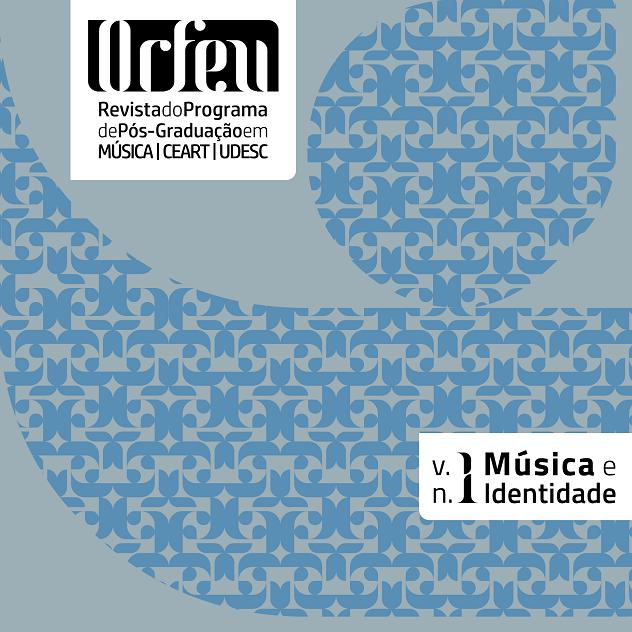A presença do piano em grupo em instituições de ensino superior no Brasil
DOI:
https://doi.org/10.5965/2525530401022016132Parole chiave:
Ensino Coletivo, Habilidades Funcionais, Piano em Grupo. Universidades brasileirasAbstract
Este estudo pretende colaborar com o conhecimento a respeito da história do Group Piano e da sua expansão no Brasil, partindo do pressuposto de que, nessa modalidade de ensino-aprendizagem, as linguagens musicais, teórica e prática, interagem de maneira coletiva. No ensino superior, essa modalidade costuma ser ministrada mediante a utilização de vários pianos digitais ou teclados para o aprendizado musical teórico-prático coletivo e é, geralmente, considerada como “Piano em Grupo”. No Brasil, há necessidade de divulgação de informações atualizadas sobre o contexto da presença deste componente curricular nos cursos de graduação em música, apesar da diversidade de nomenclatura que lhe é atribuída. O estudo encontrou e assinala, portanto, algumas características básicas históricas dessa metodologia e comprova sua presença na educação superior brasileira, por meio de um levantamento nacional.
Downloads
Riferimenti bibliografici
ADAMSON, John William. Pioneers of Modern Education: 1600-1700. 2ª impressão. Cambridge: University Press, 1921. Disponível em: <https://www.archive.org/> Acesso em: 13 fev. 2016.
ARANHA, Maria Lúcia de Arruda. História da educação e da pedagogia: geral e Brasil. 3ª edição. São Paulo: Moderna, 2006.
BEAUBIEN, Jason. Do For-Profit Schools Give Poor Kenyans A Real Choice? Publicado em 12 nov 2013. Atualizado em 22 abril 2014. Disponível em: . Acesso em: 24 jan. 2016.
BRASIL. Instituições de Educação Superior e Cursos Cadastrados. Disponível em: <http://emec.mec.gov.br/>. Acesso em: 31 ago. 2013.
BRASIL. Instituto Brasileiro de Geografia e Estatística. Disponível em: <http://www.ibge.gov.br>. Acesso em: 25 abr. 2015.
BRIDGE International Academy. Disponível em: < bridgeinternationalacadmies.com> Acesso em: 24 jan. 2016.
DAMSCHRODER, David e David Russell Williams. Music Theory from Zarlino to Schenker: A Bibliography and Guide. Pendagon Press: 1990.
DAUB, Adrian. Four-handed monsters: four-hand piano playing and nineteenth-century culture. Oxford: 6 Fordist Chords, 2014.
DENARDI, Christiane. Professores de música: história e perspectivas. Curitiba: Juruá Editora, 2007.
FISCHER, Heloísa (Org.). Anuário VivaMúsica! 2011. Rio de Janeiro: Editora e Instituto VivaMúsica! Edições, 2011.
GOLBY, David J.. Instrumental teaching in nineteenth-century Britain. England: Ashgate Publishing Company, 2004.
HAGER, Phil E.. Nineteenth Century Experiments with Monitorial Teaching. In: The Phi Delta Kappan. Vol.40, Nº 4, Africa: Its Educational Problems and Promises. (Jan., 1959) pp. 164-7. Disponível em: <http://www.jstor.org/stable/20342207> Acesso em: 13 fev. 2016.
MASON, Ella H., Raymond Burrows. Answers to criticism of piano class instruction. National Bureau for Advancement of Music, Inc. 1936/7. Disponível em: <https://www.archive.org/> Acesso em: 13 fev. 2016.
MONTANDON, Maria Isabel. Aula de Piano e Ensino de Música - Análise da Proposta de Reavaliação da Aula de Piano e sua Relação com as Concepções Pedagógicas de Pace, Verhaalen e Gonçalves (Dissertação de Mestrado não publicada). Porto Alegre: UFRGS, 1992.
PAZ, Ermelinda A.. Pedagogia Musical Brasileira no Século XX. Metodologias e Tendências. Brasília: Editora MusiMed, 2000.
QUARTERLY Musical Magazine and Review. Mr. Logier's new system of musical instuction. Vol I. Londres: 1818. Disponível em: <https://www.archive.org/> Acesso em: 13 fev. 2016.
REINOSO, Ana Paula Teixeira. O ensino de piano em grupo em universidades brasileiras (Dissertação de Mestrado em Música não publicada). Rio de janeiro: UNIRIO, 2012.
URBAN, Sylvanus. Gentleman's Magazine. Vol. 26. Londres: John Bowyer Nichols and Son, 1846. Disponível em: <https://books.google.com.br/books?id=VLw3AAAAYAAJ> Acesso em: 13 fev. 2016.
Downloads
Pubblicato
Come citare
Fascicolo
Sezione
Licenza
Copyright (c) 2016 Orfeu

TQuesto lavoro è fornito con la licenza Creative Commons Attribuzione 4.0 Internazionale.






